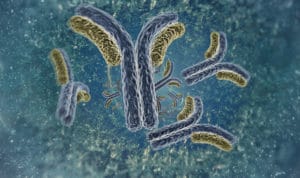Novel and Innovative Approach to Monitoring Disease Progression in Cancer on Horizon
Currently available for research purposes only, the Signatera (RUO) is the first ctDNA (circulating tumor DNA) assay custom-built for treatment monitoring and minimal residual disease (MRD) assessment. The test is being developed by Natera and is not yet FDA approved. It is currently being offered to patients across multiple cancer types including lung, colorectal, bladder, and breast as part of their data collection phase.
So what is this test exactly and what information will it provide? Patients will be asked to send in a tissue sample to the company to be analyzed. The sample can be from a variety of sites including primary tumor, lymph node, or pleural fluid. Patients will also be asked to submit a blood sample exactly as one would do for current blood biopsy testing. The tumor tissue and matched normal whole blood collected from each patient will then be sequenced using a process called whole exome sequencing.
According to the Natera website, the Signatera (RUO) methodology uses the patients tissue sample to identify unique, clonal, somatic variants individualized to each patient’s tumor. In other words, they look at each patient’s specific tissue sample and identify markers they think would be likely to change over time as the disease progresses. Every patient sample is used to design a custom-built, individual-specific assay targeting 16 clonal, somatic mutations known to be present in the tumor tissue (“tumor signatures.”) They then follow these markers over time via analysis of ctDNA in serial whole blood samples provided periodically by the patient. According to the website, the process involves multiplex PCR and ultra-deep sequencing for longitudinal ctDNA analysis of whole blood samples.
So what’s the difference between this test and a standard blood biopsy? The Signatera (RUO) test is used solely for recurrence monitoring and treatment response over time. The test thus detects disease progression, not new actionable mutations as one would see with the current FDA approved liquid biopsy testing. According to their website, “The Signatera (RUO) test will monitor treatment response over time by looking at specific ctDNA in the patients blood. A Signatera (RUO) test report indicates whether a patient is ctDNA-positive or ctDNA-negative and the variable allele frequency (VAF) levels of mutant alleles in the sample, rather than a list of therapeutically actionable genomic alterations.” This simply means that if at any point this test shows an increase in the ctDNA being monitored, the patient will need to follow up with their oncologist and get a traditional tissue or blood biopsy to identify exactly what mutation is causing the progression.
By targeting more individual-specific mutations than a generic panel approach, this technique may lead to a higher probability of ctDNA detection and enable deeper sequencing. The test has a very high rate of sensitivity and specificity demonstrating the ability to detect one mutant ctDNA molecule from two 10 ml tubes of blood (~8-9 ml of plasma) with >96% sensitivity on a sample level. In addition, Signatera (RUO) is optimized to achieve >99.5% analytical specificity on a sample level, by requiring detection of at least two mutations for a plasma sample to be considered ctDNA positive. The technology is such that this test will be able to detect disease progression months or even up to a year before changes might be seen on traditional imaging such as CT scans!
This test can also be used in early stage patients to detect the presence or absence of ctDNA in the patients blood after surgery, thus identifying patients who would benefit from adjuvant chemotherapy or radiation. This is referred to as the MRD, minimal residual disease testing. If the blood sample is positive for ctDNA, then cancer can and likely will come back if no further treatment is given. The goal is to see the ctDNA level fall to zero over time with treatment.



